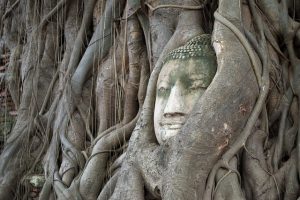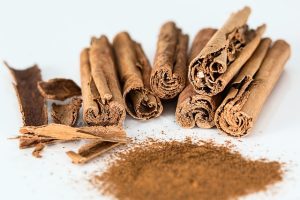Explore interesting facts about Sri Lanka, from its rich history and diverse wildlife to world-famous tea and vibrant culture. Discover what makes this island truly unique!
Known as the “Pearl of the Indian Ocean,” Sri Lanka is a nation with a rich history, a diverse population, stunning natural surroundings, and some of the liveliest cultures in Asia. However, visitors are astounded by Sri Lanka’s remarkable quantity of charm and diversity given its little size. There’s something alluring about Sri Lanka, whether it’s the verdant tea plantations in the hill country, the golden beaches along the coast, or the magnificent temples scattered throughout the island.
Some Interesting Facts About Sri Lanka

1. A Territory With Thousands of Years of History
Over 2,500 years have passed since Sri Lanka’s founding. The island was apparently populated by prehistoric man around 500,000 years ago, but written history began with the Sinhalese arrival in the sixth century BCE. Ancient manuscripts such as the *Mahavamsa* and *Culavamsa* provide us with a wealth of historical details on the dynasties and rulers of Sri Lanka.
The Sigiriya Rock Fortress, a UNESCO World Heritage Site renowned for its enormous lion-shaped gate and breathtaking paintings, is one of the most striking locations that vividly depicts this history. Constructed in the fifth century by King Kashyapa, this stronghold serves as a testament to Sri Lanka’s advanced ancient engineering skills.
2. The Oldest Living Tree in the World

One of the most famous historical attractions in Sri Lanka is the *Sri Maha Bodhi Tree*. At more than 2,300 years old, this sacred tree in the medieval city of Anuradhapura is recognized as the oldest tree still surviving that was planted by mankind. Princess Sangamitta brought it to Sri Lanka from India, and she was instrumental in the island’s Buddhist mission.
The Buddha attained enlightenment under the original Bodhi tree, from which the tree is directly descended. One of Sri Lanka’s most revered locations, thousands of pilgrims still flock here to pay their respects today.
3. The Tea Capital of the World

Sri Lanka’s tea industry is world-famous, and it’s not just for its taste but also for its scenic plantations. The country’s tea industry began in the mid-19th century when the British colonial rulers introduced it as a replacement for coffee plantations destroyed by disease. Today, Sri Lanka is one of the largest tea exporters in the world.
Ceylon tea, as it’s commonly known, is renowned for its distinct flavor and aroma. If you visit the hill country regions of Nuwara Eliya, Kandy, or Ella, you’ll find yourself surrounded by lush green tea estates, where visitors can witness the process of tea-making from plucking leaves to brewing a fresh cup.
4. A Wildlife Enthusiast’s Paradise
Although Sri Lanka is tiny, it ranks among the world’s most biodiverse countries. A wildlife lover’s paradise, the island boasts 26 national parks and countless natural reserves. The biodiversity of Sri Lanka’s wildlife is astounding, ranging from exotic birds and sloth bears to elephants and leopards.
An yearly gathering of elephants in Minneriya National Park is one of the most unusual wildlife displays. As the dry season approaches, hundreds of wild elephants congregate annually around the Minneriya Tank to feed and drink. Witness these amazing creatures in their native environment during one of the world’s greatest natural gatherings—a once-in-a-lifetime opportunity.
5. A Nation Home To Eight World Heritage Sites
Considering its small size, Sri Lanka has an outstanding eight UNESCO World Heritage Sites. These include the historic cities of Kandy, the Golden Temple of Dambulla, the ancient cities of Polonnaruwa and Anuradhapura, and the Sinharaja Forest Reserve, a biodiversity hotspot.
A different window into Sri Lanka’s rich history and cultural legacy is provided by each of these locations. Among these esteemed locations is the Sigiriya Rock Fortress, which was previously discussed and serves as a representation of the island’s historic architectural accomplishments.
6. Home to the Tiniest Elephant Species in the World

Not only are Sri Lankan elephants well-known worldwide, but the nation is also home to the tiniest subspecies of elephants in existence.
A subspecies of Asian elephants, Sri Lankan elephants are typically smaller than their African counterparts.
Their lack of tusks or lower size is what sets them apart from other animals. These elephants, despite their size, are an important aspect of Sri Lankan culture and are frequently seen at festivities like the Esala Perahera in Kandy, where they are lavishly adorned and honored.
7. A nation that values diversity
Sri Lanka is a culturally, religiously, and ethnically diverse country for such a tiny island. Sinhalese, Tamil, Moor, and Burgher communities make up the majority of the population, and each brings with them own customs, languages, and holidays. Though Christianity, Islam, and Hinduism are also extensively practiced, Buddhism is the most common religion.
Vibrant festivals around the nation showcase this cultural richness. Sri Lanka’s celebrations are vibrant and lively, whether it be the Buddhist Vesak celebration, the Hindu Diwali festival, or the Tamil New Year celebration. Food is an important part of these festivals, and every event offers a different experience, from street parades to temple rites.
8. The Only Country to Be Completely Self-Sufficient in Cinnamon

Sri Lanka’s contribution to the spice world is legendary. The country is the birthplace of cinnamon, and today it remains one of the largest producers and exporters of high-quality cinnamon globally. Sri Lankan cinnamon, also known as Ceylon cinnamon, is distinct from the common cassia cinnamon found elsewhere due to its delicate flavor and thinner bark.
In fact, the ancient Romans were known to import Sri Lankan cinnamon, and the spice was so valuable that it was considered more precious than gold at times. Today, visitors can explore spice gardens and learn about the rich history of cinnamon production in Sri Lanka.
9. The Special Railways of Sri Lanka
The railway system in Sri Lanka offers visitors more than simply a mode of transportation; it is also a picturesque experience. Many people rank the train ride from Kandy to Ella—which winds past verdant tea plantations, foggy mountains, and quaint villages—as one of the most breathtaking in the entire world.
The railway, which was initially constructed by the British to carry tea from the highlands to Colombo, today caters to both residents and visitors. Incredibly beautiful scenery, kind smiles, and open windows make train travel in Sri Lanka an exciting experience.
10. A Diverse Culinary Scene
Sri Lankan cuisine is a vibrant mix of flavors, with influences from Indian, Dutch, Portuguese, and British cuisines. The country’s food is known for being spicy and full of bold flavors, with rice and curry being the staple meal.
From mouth-watering seafood dishes along the coast to spicy coconut sambols and hoppers (crispy bowl-shaped pancakes) in the countryside, Sri Lankan food is a culinary adventure. Don’t forget to try *kottu roti*, a street food favorite made of chopped roti bread, vegetables, and meat, often cooked with a chorus of rhythmic chopping sounds.
11. The Highest Literacy Rate in South Asia
Sri Lanka boasts an impressive literacy rate of over 90%, one of the highest in South Asia. Education is highly valued in the country, and free education has been available since 1945. This commitment to education is a key factor in the country’s rapid development.
12. An Island That’s Ideal for Surfing

Surfing enthusiasts have long known that Sri Lanka’s coastline offers some of the best surfing conditions in the world. Arugam Bay on the east coast is a world-renowned surf spot, attracting surfers from across the globe. The island’s warm waters and consistent waves make it an ideal destination for surfers, whether they’re beginners or professionals.
Conclusion
Sri Lanka is a historical and cultural hotspot rich in stunning scenery and intriguing customs. This little island is incredibly diverse and charming, offering everything from world-famous tea and lively festivals to ancient temples and breathtaking wildlife. Every visitor to Sri Lanka, regardless of interests, may find something special to enjoy, be it history, wildlife, or cuisine.




